How to get the best possible relief whilst sleeping with sciatica.
Sciatica is a painful condition, that is usually triggered by the irritation of the sciatic nerve.
The pain can be felt anywhere from the buttocks right the way down to the lower leg and it can be one of the most debilitating conditions to have.
Alongside these numerous difficulties sciatica patients have to deal with, one of the most taxing is finding a proper sleeping position that will reduce the pain and pain-related anxiety and stress.
In this article I will take a look at some of the best sleeping positions for folks dealing with sciatica and give you some suggestions for a pain free slumber.
The Anatomy Of Sciatica Nerve Pain
The sciatic nerve is the largest nerve in the human body and is derived from what is called the Sacral Plexus.
The nerve originates from this lumbar area and extends down the back of each leg into each foot.
It also supplies sensation to the sole of the foot, the ankle, the entire lower leg, and the back of the thigh.
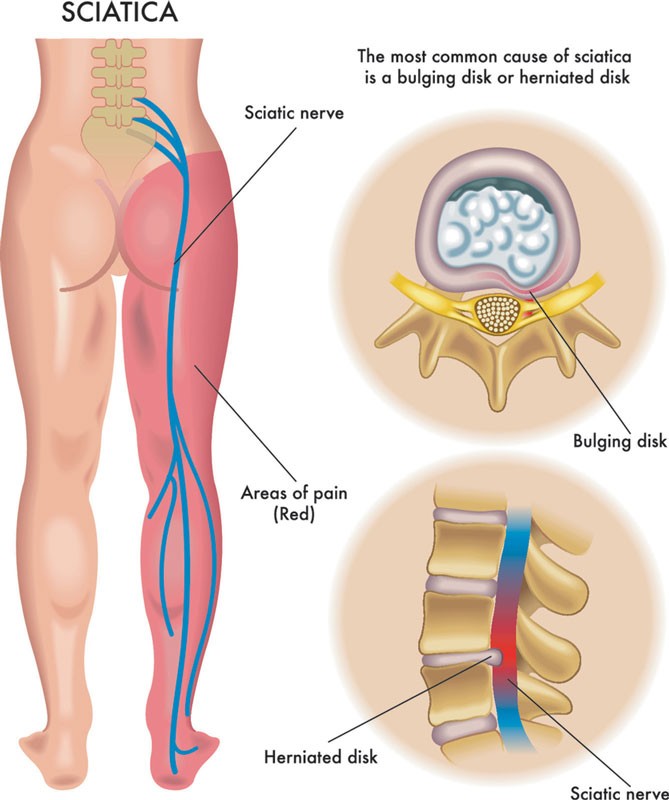
What causes sciatica?
Sciatica is caused by irritation and/or compression of the sciatic nerve and can be felt as a burning/stinging painful sensation along the route of the nerve.
Some of the causes of sciatica include:
– Herniated or bulging discs putting pressure on the sciatica nerve
– Narrowing of the spinal canal in the lower back caused by lumbar spinal stenosis.
– Degenerative disc disease
– Spondylolisthesis, when one vertebra slips over another one.
– Muscle spasms in the buttocks or back – piriformis syndrome
– Pregnancy
– Additional causes include lack of exercise, obesity, wearing high heels, or sleeping on a mattress that is too soft.
What are the best positions for sleeping with sciatica?
Finding the best sleeping position to relieve sciatica pain may be a matter of trial and error.
However, as a general rule it is a good idea to stick to positions that maintain the natural alignment of your spine.
Sleeping on your back –
Although there is no correct way to sleep with sciatica it is generally recommended to try back sleeping first.
The secret to finding comfort with back sleeping is by getting as much support for your lower back as possible.
If you do not have a supportive bed then we bring in the help of other pillows, cushions and rolled up towels.
We need to be lying on our back making sure our whole body is in contact with the bed.
Next, you want to elevate your knees by placing several pillows beneath them. By elevating the knees we are alleviating the tension of the hip flexor muscles pulling on the lower back.
If your sciatica is being caused by herniated or bulging discs this then reduces the pressure from the area where the sciatica nerve is located.
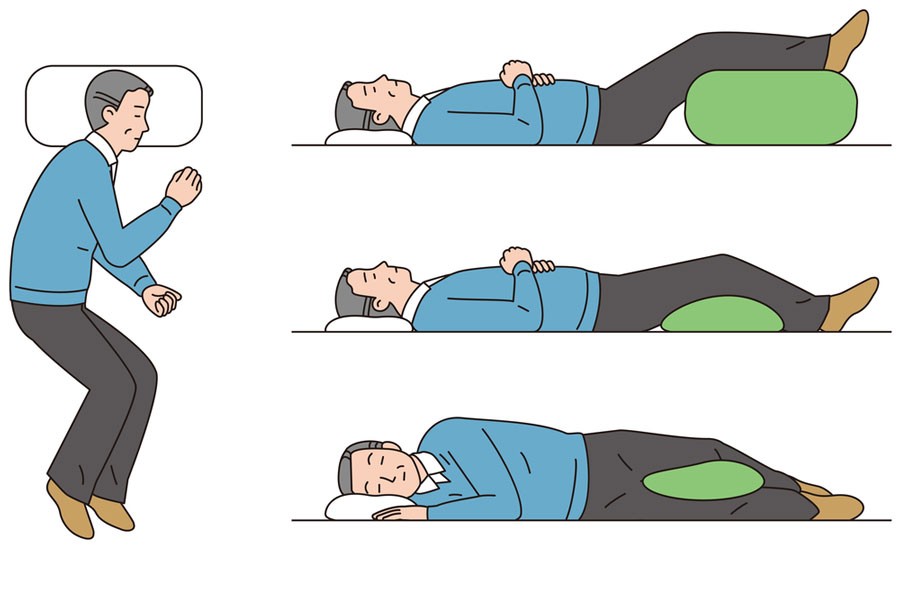
You can place as many pillows as you need to find your comfortable spot. I remember when I was at my worst this was the best sleeping position for me and I used 2 big pillows placed under my knees for optimal relief.
Obviously, we are all different so trial and error is key.
Learn to sleep on your side –
If sleeping on your back doesn’t work for you then you may find sleeping on your side helps to reduce the pain by taking pressure of your irritated nerve.
You should place a pillow between your knees to help keep your spine, hips and pelvis aligned.
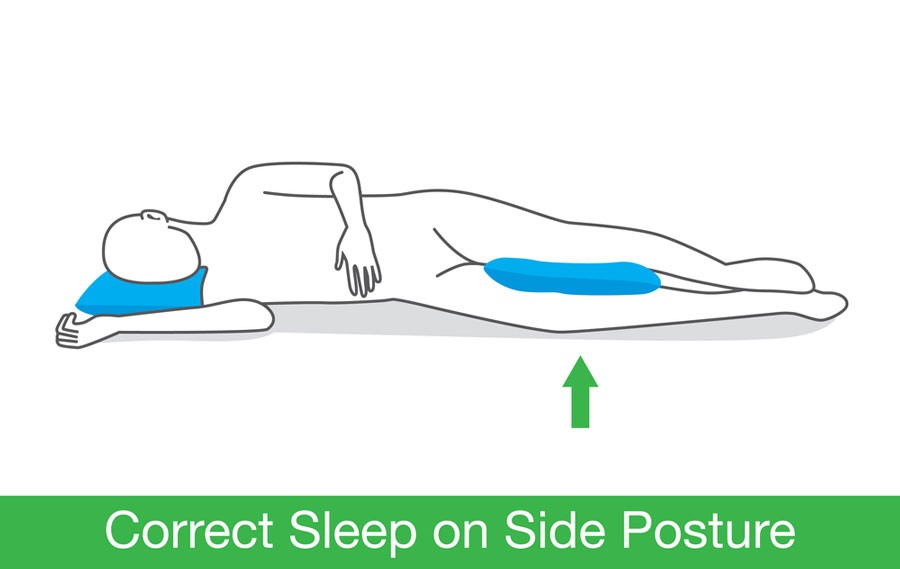
You can also place a small pillow or rolled up towel under your lower back region to support your lumbar spine from sagging.
Remember, we are trying to maintain a neutral spine whilst in this position.
If your sciatica is being caused by stenosis you can try the fetal position, whereby you pull your knees up towards your chest as this will open the space between the vertebra and give you relief.
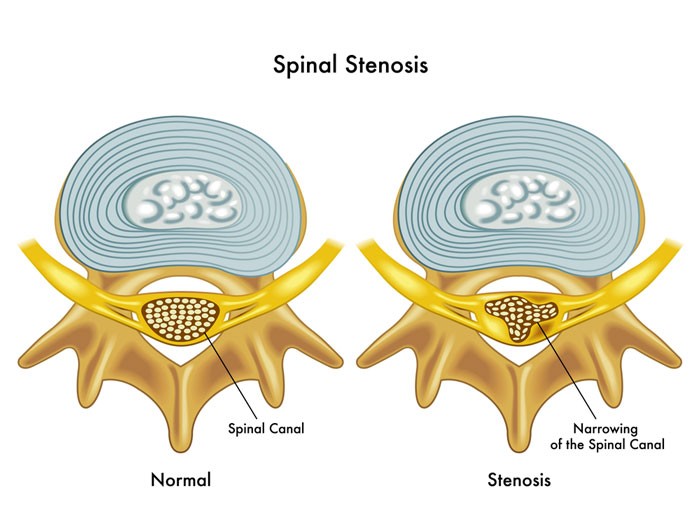
However, if your sciatica is being caused by a bulging or herniated disc then the fetal position may cause more discomfort.
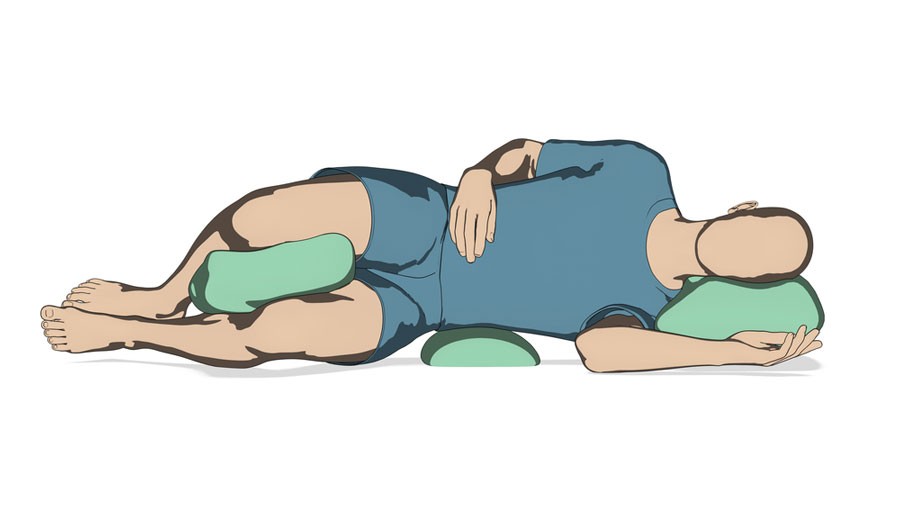
Sleeping on your front –
It is generally recommended that you avoid sleeping on your front as when you sleep your spine tends to curve towards your mattress putting stress on your muscles and joints.
However, if arching your back makes your sciatica pain feel better then you may benefit from front sleeping.
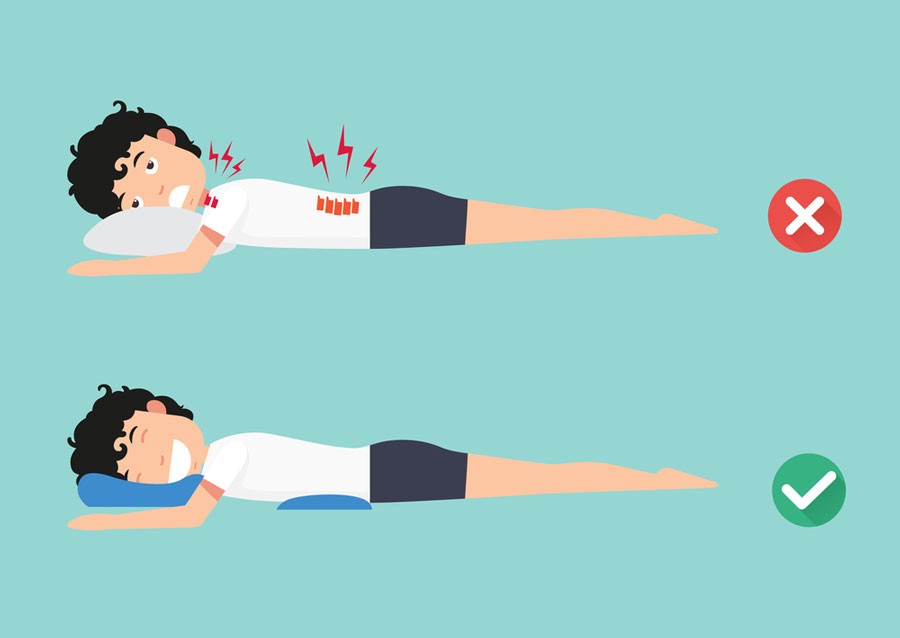
If this is to be your position of choice then I would recommend firming up your mattress with something such as plywood and using a suitable ergonomic pillow to prevent neck pain.
Additional tips for sleeping with sciatica
- Have a warm bath before bed – a warm bath will allow for the release of pain fighting endorphins and relax the muscles around the sciatic nerve.
- Firm up your mattress – If you find your mattress is too soft to give you suitable support put a plywood board between your mattress and the box spring or you could try putting the mattress directly on the floor.
- Do some gentle stretches before bed for extra sciatica pain relief – although exercising right before bed is not normally recommended due to the adrenaline release some gentle stretches and movements can help reduce sleeping with sciatica pain.
You can have a look at some effective stretches and exercises for sciatica pain in my YouTube video below.
I hope the above ideas can give you some relief as sleeping with sciatica doesn’t have to be a nightmare.
Getting the rest while suffering from sciatica is necessary to help your body repair itself and alleviate sciatica symptoms.
With the right resources and a change in sleeping techniques, you may find the perfect sleeping position that works for you.
If you would like more guidance on handling your sciatica pain you should sign up for my back pain relief email series.
You will learn a variety of exercises, stretches and behavioural change techniques that can help you overcome chronic back/sciatica pain.
Please share this article with others you may think will benefit and don’t forget to sign up for future articles below.

